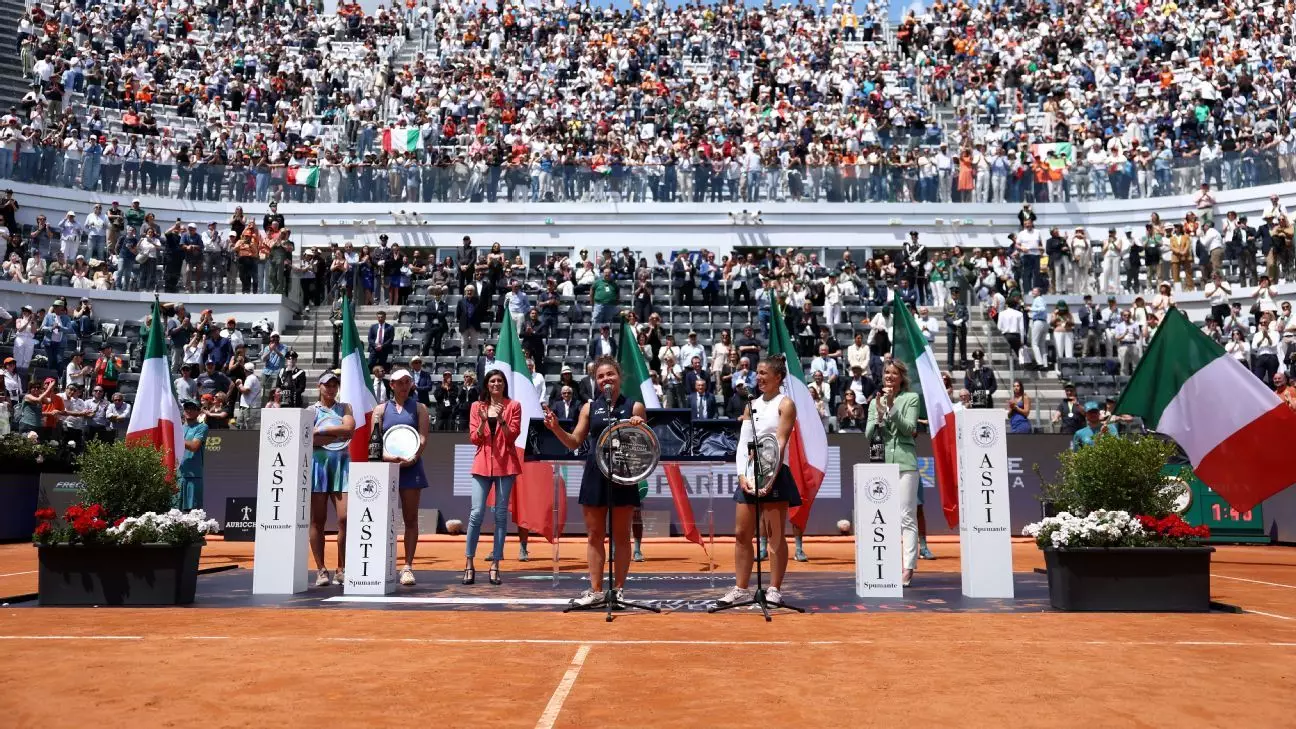In recent years, Italian tennis has undergone a remarkable transformation, with players like Jannik Sinner and Jasmine Paolini taking center stage on the global circuit. Sinner’s meteoric rise to the top of the ATP rankings has not only invigorated the sport within Italy but has also set the stage for a new era of tennis excellence. His combination of power, finesse, and youthful exuberance has won over fans and indicates a promising future for the sport in the country. Meanwhile, Paolini’s historic victory at the Italian Open—the first by a local player in four decades—showcases the burgeoning talent pool in Italy, suggesting that this might just be the beginning.
Middle-tier players such as Lorenzo Musetti and Federico Cinà, along with up-and-coming talents like Tyra Caterina Grant, represent a wave of fresh energy. This collective talent hints at the possibility of Italy establishing itself as a powerhouse in international tennis, sustaining this renaissance for years to come. However, amidst this thriving atmosphere, there remains a yearning for more—a desire that is fervently expressed by the leadership of the Italian Tennis and Padel Federation.
An Ambitious Dream: Making the Italian Open a Slam
Angelo Binaghi, the president of the Italian Tennis and Padel Federation, has voiced a striking ambition: to elevate the Italian Open to the status of a fifth Grand Slam tournament. His criticism of the long-standing tennis hierarchy is both bold and provocative. He questions why the tennis community has settled for a monopoly of four tournaments, which have remained unchanged for over a century. Binaghi’s assertion that the current system is “unfair” is a rallying cry not just for Italian tennis but for the sport’s evolution as a whole.
The Italian Open, with its history and rising prominence, stands poised at the brink of this transformation. Binaghi’s vision necessitates not only attracting talent but shifting perceptions, where an event steeped in tradition is seen as equally demographically significant as the Grand Slams. Importantly, this vision isn’t just about prestige—it’s about growth, inclusivity, and community involvement in the sport.
Strategic Developments: Hosting and Infrastructure
For this audacious plan to come to fruition, substantial investments in infrastructure are essential. A retractable roof planned for Campo Centrale is a step in this direction, indicating that organizers are serious about making the Italian Open more resilient to weather disruptions—a crucial factor for any Grand Slam contender. An investment of about €60 million ($67 million) in this roof not only modernizes the venue but also enhances the overall spectator experience by increasing the seating capacity.
Moreover, the expansion of the tournament grounds reflects an ambition to create an event that rivals the majors. With a jump from 12 to 20 hectares and the introduction of additional competition arenas, the Italian Open is not just increasing in physical size, but also in its aspirations and potential appeal. This comprehensive strategy includes the use of high-profile events like the ATP Finals and the Davis Cup to forge a stronger global identity for Italian tennis.
The Competitive Landscape
Understanding the broader international landscape is crucial to the Italian Open’s aspirations. The possibility of acquiring the license for the Madrid Open exemplifies strategic thinking that could reshape the tennis calendar. By enhancing the significance of the Rome event, Binaghi’s plans illustrate an understanding of market dynamics—where cities and venues can be pivotal in cultivating a rich tennis culture. The future of Italian tennis does not only rest on the shoulders of its standout players; it also hinges on the vision and initiatives set forth by its administrators.
As Italian tennis continues to build momentum, incorporating the best practices of international events while maintaining its cultural uniqueness will be paramount. The ambitious dream of making the Italian Open a Grand Slam event may seem distant, but with concrete plans in place and homegrown talents emerging, the vision could well be within reach. The dialogue around this ambition transcends sports; it champions a thrilling narrative of aspiration, progress, and the relentless pursuit of greatness.


Leave a Reply